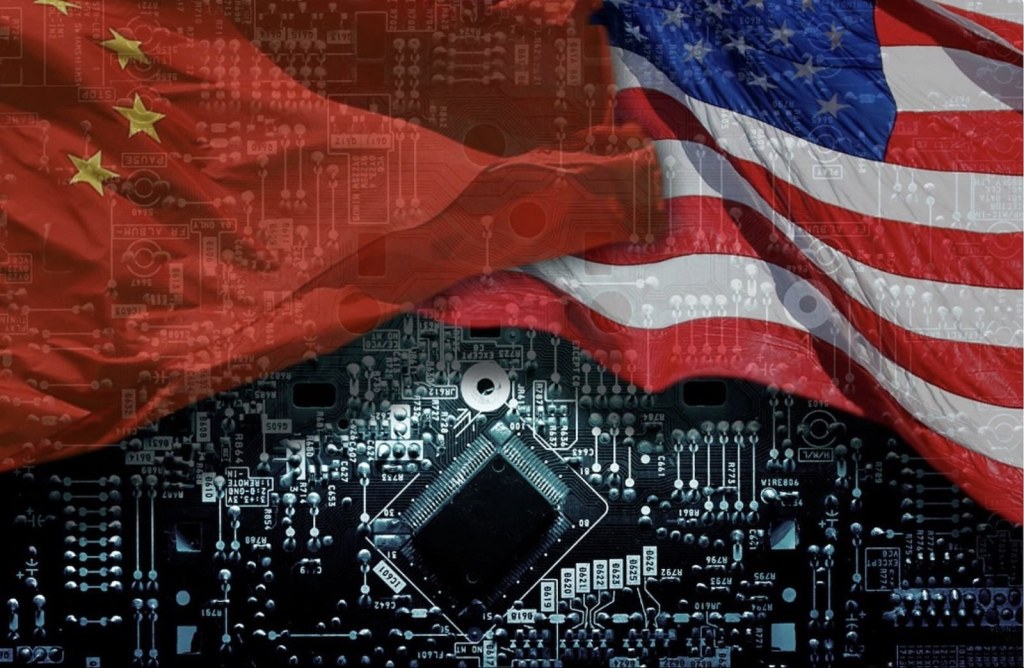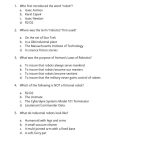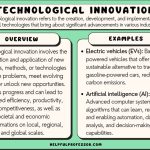Unleashing The Transformative Potential Of Technology Innovation In The Era Of Great Power Competition: Embrace The Future Now!
Technology Innovation and Great Power Competition
Greetings, Readers! In the ever-evolving world of technology, innovation has become the battleground for great power competition. The advancements and breakthroughs in various sectors have paved the way for nations to assert their dominance and influence. In this article, we will delve into the intricacies of technology innovation and its role in the global competition among major powers. Join us as we explore the what, who, when, where, why, and how of this phenomenon, along with its advantages, disadvantages, frequently asked questions, and a call to action. So, let’s begin!
Introduction
The concept of technology innovation and great power competition revolves around the race among nations to develop and implement cutting-edge technologies to gain a strategic advantage in various domains. This competition is primarily driven by economic, military, and geopolitical motivations. The ability to innovate and harness the potential of emerging technologies has become a vital component of a nation’s power and influence in the 21st century.
1 Picture Gallery: Unleashing The Transformative Potential Of Technology Innovation In The Era Of Great Power Competition: Embrace The Future Now!

The competition is fierce as countries invest heavily in research and development, infrastructure, talent acquisition, and strategic partnerships to stay ahead. The stakes are high, as technology innovation can shape the future of industries, economies, and even national security. Understanding the key aspects of this competition is crucial to comprehend the dynamics of global power struggles in the modern era.
Now, let’s take a closer look at the various dimensions of technology innovation and great power competition:
What is Technology Innovation and Great Power Competition?
Technology innovation refers to the process of introducing new or improved technologies, products, or services that disrupt existing markets or create new ones. It involves research, development, experimentation, and implementation of novel ideas to improve efficiency, productivity, and overall quality of life. Great power competition, on the other hand, refers to the rivalry and struggle for influence, dominance, and control among the world’s major powers.

Image Source: stanford.edu
When these two concepts intersect, we witness a race among nations to develop and adopt emerging technologies, such as artificial intelligence, quantum computing, advanced robotics, biotechnology, and cybersecurity, to name a few. This competition extends beyond economic and military realms, encompassing areas like space exploration, infrastructure development, and even cultural influence.
As technology continues to advance at an unprecedented pace, the competition intensifies, with each nation vying to be at the forefront of innovation. The implications of this race are far-reaching, impacting not only the competing nations but also the global order as a whole.
Who are the Major Players in Technology Innovation and Great Power Competition?
The major players in technology innovation and great power competition include the United States, China, Russia, and the European Union. These entities have significant resources, capabilities, and ambitions to shape the course of technological advancements and gain an edge over their rivals.
The United States, with its Silicon Valley and thriving tech industry, has been a frontrunner in innovation for decades. It boasts leading companies in various domains, including information technology, biotechnology, aerospace, and defense. Additionally, its robust research and development infrastructure, coupled with a favorable regulatory environment, have contributed to its technological prowess.
China, on the other hand, has emerged as a formidable competitor in recent years. With its vast market, state-sponsored initiatives, and ambitious plans like Made in China 2025 and Digital Silk Road, it aims to become a global leader in key technologies, such as artificial intelligence and 5G. The Chinese government’s strategic investments and support for domestic tech companies have propelled the nation’s innovation capabilities.
Russia, known for its expertise in cyber warfare and space exploration, also actively participates in the great power competition. Its advancements in areas like quantum computing, aerospace engineering, and military technology contribute to its influence on the global stage. Collaboration with other nations and strategic alliances play a crucial role in Russia’s pursuit of technological dominance.
The European Union, comprising technologically advanced nations like Germany, France, and the United Kingdom, also plays a significant role in this competition. With its focus on research and development, the EU aims to foster innovation, strengthen its digital infrastructure, and create a conducive environment for technology startups to flourish.
When and Where Does Technology Innovation and Great Power Competition Take Place?
Technology innovation and great power competition are ongoing processes that transcend geographical boundaries. They occur in various sectors, including but not limited to, information technology, biotechnology, aerospace, energy, healthcare, and telecommunications.
Technological advancements are not limited to specific timeframes but rather progress continuously. Breakthroughs and disruptions can happen at any moment, influencing the dynamics of the competition. However, it is essential to note that certain advancements may gain momentum during specific periods, driven by factors like policy changes, economic conditions, and societal shifts.
The competition takes place globally, with major powers strategically investing in and collaborating with other nations to gain an advantage. Initiatives like research partnerships, joint ventures, and technology transfers contribute to the spread of innovation across borders. Furthermore, international organizations and platforms, such as the World Economic Forum and G20, provide avenues for dialogue and cooperation among nations.
Why is Technology Innovation and Great Power Competition Significant?
Technology innovation and great power competition hold immense significance due to their far-reaching implications. Here are a few reasons why this phenomenon should be closely monitored:
1. Economic Growth: Technological advancements drive economic growth by creating new industries, generating jobs, and increasing productivity. Nations that excel in innovation are likely to have a competitive edge in the global marketplace.
2. National Security: Emerging technologies have a direct impact on national security. Developments in areas like cybersecurity, artificial intelligence, and space exploration can shape the balance of power and influence between nations.
3. Geopolitical Influence: Technology innovation acts as a catalyst for geopolitical influence. Countries that lead in critical technologies can exert control over global supply chains, set technological standards, and shape international norms and regulations.
4. Societal Transformation: Innovative technologies have the potential to transform societies, improve quality of life, and address pressing global challenges, such as climate change, healthcare access, and poverty alleviation.
5. Ethical Concerns: The rapid pace of technological advancements raises ethical concerns related to privacy, security, inequality, and job displacement. Balancing innovation with responsible practices is crucial to mitigate these risks.
How Does Technology Innovation and Great Power Competition Occur?
Technology innovation and great power competition occur through a combination of factors, strategies, and actions. Here are some key aspects of this process:
1. Research and Development: Nations invest heavily in research and development to explore new ideas, technologies, and solutions. This includes funding academic institutions, establishing innovation hubs, and supporting public-private partnerships.
2. Talent Acquisition: Attracting and retaining top talent in science, technology, engineering, and mathematics (STEM) fields is crucial for innovation. Nations offer incentives, scholarships, and immigration policies to attract skilled professionals.
3. Strategic Partnerships: Collaboration and alliances among countries, corporations, and research institutions facilitate knowledge exchange, technology transfer, and joint ventures. These partnerships enhance innovation capabilities and promote global cooperation.
4. Policy and Regulation: Governments play a pivotal role in fostering innovation through favorable policies, regulations, and intellectual property frameworks. Balancing support for innovation with ethical considerations and national security concerns is a delicate task.
5. Investment and Infrastructure: Adequate funding, infrastructure, and access to capital are essential for technology innovation. Governments and private entities invest in critical areas like broadband connectivity, data centers, and research facilities to foster a conducive environment.
6. Intellectual Property Protection: Intellectual property rights incentivize innovation by providing legal protection and economic benefits to creators and inventors. Nations enforce patent laws, copyrights, and trademarks to encourage innovation and prevent unauthorized use.
Advantages and Disadvantages of Technology Innovation and Great Power Competition
Like any phenomenon, technology innovation and great power competition have both advantages and disadvantages. Let’s explore them in detail:
Advantages:
1. Technological Advancements: Competition drives continuous technological advancements, leading to breakthroughs in various sectors and improving quality of life.
2. Economic Growth: Innovation fosters economic growth, creating jobs, attracting investments, and boosting national GDP.
3. Improved Standards of Living: New technologies provide solutions to societal challenges, such as healthcare, transportation, and energy, resulting in improved standards of living.
4. Global Collaboration: Competition often leads to collaboration among nations, fostering knowledge exchange, cultural understanding, and diplomatic ties.
5. National Security: Innovation in defense technologies enhances national security and ensures a country’s ability to protect its interests.
Disadvantages:
1. Technological Disparity: Competition may exacerbate the technological divide between developed and developing nations, leading to further inequality.
2. Ethical Concerns: The rapid pace of technological advancements raises ethical dilemmas related to privacy, security, and job displacement.
3. Economic Imbalances: Some countries may gain a disproportionate advantage in certain technologies, leading to economic imbalances and potential exploitation.
4. Geopolitical Tensions: Technology innovation can exacerbate geopolitical tensions and rivalries between nations, potentially leading to conflicts.
5. Environmental Impact: Technological advancements may have unintended environmental consequences, such as increased energy consumption and electronic waste.
Frequently Asked Questions (FAQ)
1. Will technology innovation lead to job loss?
No, technology innovation may lead to job displacement in certain sectors, but it also creates new opportunities and industries, leading to overall job growth.
2. How does technology innovation impact developing nations?
Technology innovation can act as a catalyst for development in developing nations, providing opportunities for leapfrogging traditional stages of growth and addressing societal challenges.
3. Are there any risks associated with emerging technologies?
Yes, emerging technologies like artificial intelligence and biotechnology come with risks, including privacy breaches, ethical concerns, and potential for misuse.
4. How can countries collaborate in technology innovation?
Countries can collaborate in technology innovation through research partnerships, knowledge exchange, joint ventures, and sharing best practices.
5. How can individuals contribute to technology innovation?
Individuals can contribute to technology innovation by pursuing STEM education, engaging in research and entrepreneurship, and supporting innovation ecosystems.
Conclusion
In conclusion, technology innovation and great power competition have become intertwined in the quest for global dominance. As nations strive to lead in emerging technologies, the implications extend beyond economic growth and military capabilities. The race for innovation has the potential to shape the future of industries, national security, and societal transformation. It is essential for stakeholders to navigate this competitive landscape responsibly, balancing the advantages with ethical considerations and collaborative efforts. By embracing innovation and fostering global cooperation, we can harness the power of technology for the betterment of humanity.
Final Remarks
In this era of rapid technological advancements, it is crucial to acknowledge the impact of technology innovation and great power competition. While progress is essential for societal growth and global development, it is equally important to ensure responsible practices and ethical considerations. The benefits of innovation should be accessible to all, and collaboration among nations should be prioritized to address common challenges. As we move forward, let us embrace technology as a force for positive change and work together to create a future that benefits everyone.
This post topic: Technology Innovation



